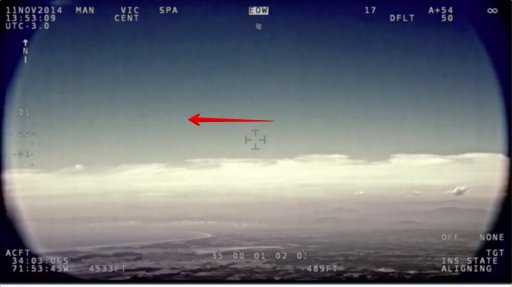The original HuffPo article states:
"At 1:52 pm, while filming the terrain, the technician observed a strange object flying to the left over the ocean. Soon both men observed it with the naked eye. They noticed that the velocity and the altitude of the object appeared to be about the same as the helicopter, and estimated that the object was approximately 35 to 40 miles (55-65 km) away. It was traveling W/NW, according to the Captain."
Actually, this doesn't make sense, seeing as their GPS placed them at the coast (or near it) and the coast curves to the N/ NW. They stated that the object was traveling W/ NW, which would actually leave it out over the water, if it was there to begin with.

